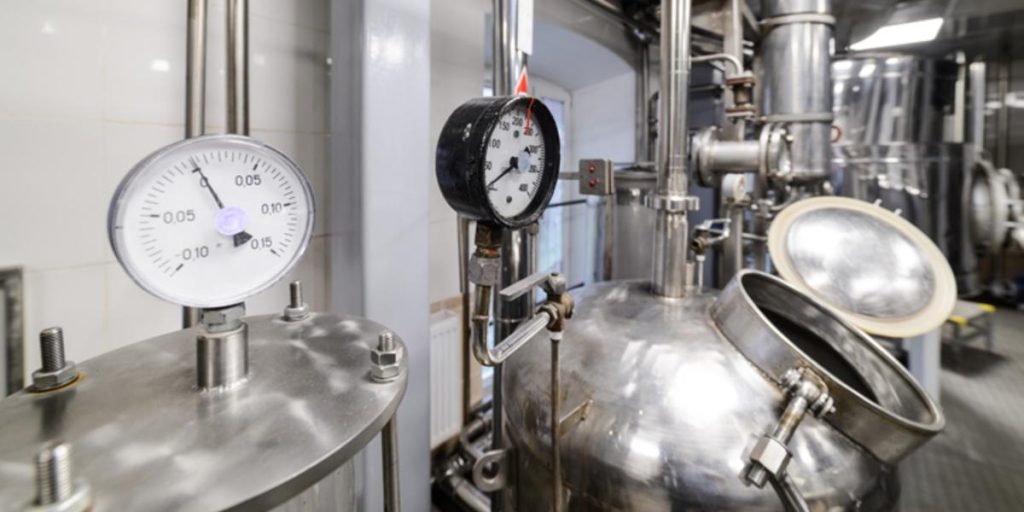The Beginners Guide to Thermometers for Distillers

Besides the question of “what kind of still do I need?”, I feel almost certain that the second most frequently asked question is “where do I put the thermometer?”.
The short answer is that the best place to locate a single thermometer is at the highest point of the apparatus.
Why? Well, there is a direct relationship to alcohol vapor temps and the ABV (alcohol by volume) of the finished spirit. By looking online, you can find an ethanol phase diagram that does a fairly good job of illustrating this concept.
The remaining considerations are largely predicated upon what kind of still are you running.
On column stills, it is not uncommon to find a thermometer located on the plate level just below the reflux condenser. The data at that location will basically tell the operator how long the operator will need to run the system in 100% reflux mode.
By that I mean how long to allow the system to enrich the liquid beds at each plate level prior to collecting product. Prior to collection, once temperatures have stabilized there will be no need to further allow the system to remain in 100% reflux mode.
Doing so would generally be considered a waste of time as a stable plate temperature indicates that the plate(s) are fully enriched. Further refluxing would waste fuel/energy and time.
Even a 5- or 10-minute savings per run could add up to dozens upon dozens (if not hundreds) of man hours at the end of a commercial distillery’s fiscal year. And so, a thermometer below the reflux condenser is clearly going to provide usable data.
Similarly, thermometers at every plate level will allow the distiller to have an even better understanding as to how fully enriched each liquid bed is. The distiller can watch each thermometer stabilize and know precisely when the column is fully enriched.
Thermometers for Distillers
Additionally, the commercial distiller will be able to read several thermometers at multiple plate levels to ascertain how optimally he (or she) is maintaining the temp gradient within the column during product collection. Bottom temps are far less stable compared to temps at the top.
Having matching temps at the top two plates indicates a very stable gradient. Having matching temps at the top three plates makes you a distillery god (or goddess)! Seriously though, maintaining stable temps at the top of the apparatus allows for optimal separation.
Then toward the end of the run when alcohol is running low, the distiller can observe the temps climb from the bottom up as an indicator that all of the usable alcohol has been collected.
For pot stills, the data is far less stable and therefore not as comprehensive. Certainly, being able to see temperatures can offer a measure of comfort to an inexperienced distiller. But as a pot stiller, you will find that you have absolutely zero control over temperatures. More on this in just a minute.
Let’s start with the boiling point of water.
The boiling point of water is 212 degrees (100 c) F. And no matter how much heat you throw at your kettle, the liquid temp of water at boiling will never exceed 212 (at sea level). As long as there is water in the kettle, the temps of the water indeed cannot exceed 212 f because, well, that’s what water boils at. Not 250 f. Not 300 f.
Next, the boiling point of ethanol is 173.1 F (78.37 c). However, ethanol is 100% infinitely miscible with water. That means that ethanol mixes quite nicely with water. And the boiling point of that mixture is determined by the percentage of alcohol within that mixture.
In short, a 10% mixture will have a lower boiling point than an 8% mixture for example. So, a 10% alcohol to 90% water mixture will boil at some place between 212 f and 173.1 f.
For the sake of this discussion, lets assume that we will start producing vapor a 190 f. and start to collect distillate. As we collect the distillate, the liquid and vapor temperatures in the kettle must increase.
This is so because we are now changing the boiling point of the kettle charge by removing a percentage of the mixture that has the lower boiling point. And the more distillate we collect, the more temps will continue to increase.
Lowering heat input to try and stabilize/control temperatures will only serve to slow collection speed or completely stop the flow of distillate all together.
Notwithstanding the middle part of a larger kettle charge, when pot stilling if you are able to stabilize and hold a temperature, it simply means that you are not collecting distillate.
The broader point here is that the liquid in the kettle will boil when it boils. And as long as you are collecting distillate, you’ll have no control over any of the temperatures. As the distiller you’ll be able to control heat input, but that is not at all the same as controlling or particularly stabilizing your temperatures.
Monitoring temperatures on your pot still can assist as a timing mechanism at best. Need a thermometer on your pot still?
It’s not going to hurt. But it’s also not going to help you as much as you previously may have thought. Learn to gauge the thickness of your distillate discharge stream, make your cuts according to smell, taste, and physical touch and you’ll make a far better finished spirit than focusing on temperatures.
>> Still have questions or require additional information about StillDragon equipment? Contact StillDragon today.